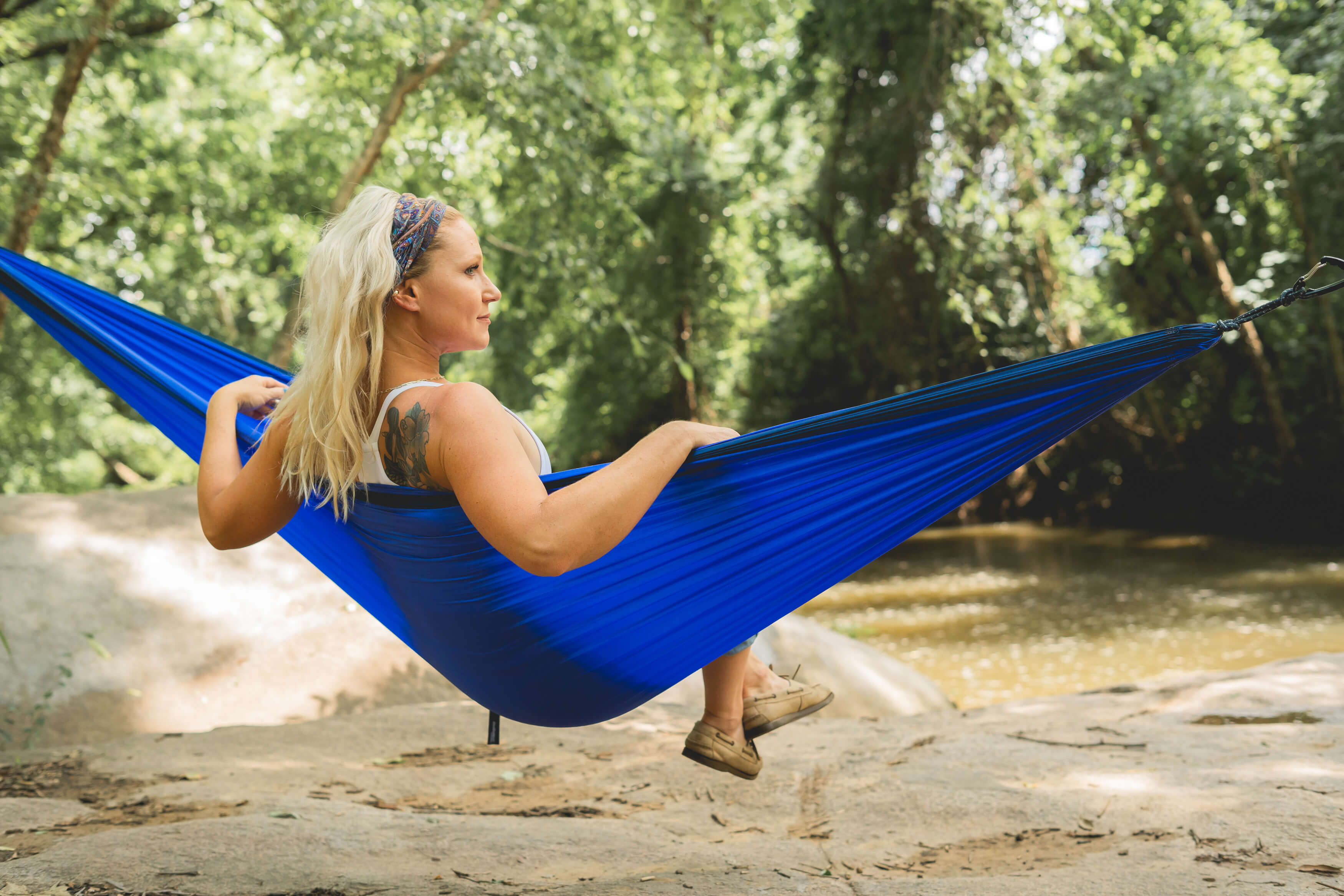When you think hammock, you think ultimate relaxation. When you see a hammock, with its comfortable parachute material beckoning you in for a delightful snooze, it’s hard to say no. And though they’re pretty much universally known as a thing of relaxation greatness, there are some misconceptions about hammocks that we feel need to be debunked.
1. They are unstable. Traditional rope hammocks are notorious for flipping very very easily (and dangerously!). However, the precariousness lies solely in the spreader bars. Parachute hammocks do not have these bars, so there is a small chance that the hammock will flip on its own without some kind of crazy drastic movement on your part.
2. They only fit one person comfortably. This depends on how big of a hammock you have. Some hammocks are made for one, and some for two. Of course, you’ll have to be okay with getting close and personal with the people you’re sharing the hammock with, but who doesn’t like a little bonding sesh?
3. They give you anxiety. Interestingly enough, hammocks actually can reduce anxiety. They take pressure off of your muscles by molding to your body’s shape, providing support and eliminating stress factors. Anxiety is not a purely mental thing – you can help relieve it physically. Experiencing pressure-free weightlessness in a hammock will allow blood to flow to all parts of your body, relaxing you. If the anxiety stems from a fear of heights, hammock straps make it possible to hang your hammock as low to the ground as possible while still feeling the glorious pressure-free weightlessness.
4. They only hold light people. Parachute hammocks are durable and hold up to 400 lbs. Offensive linemen, sumo wrestlers, and saint bernards are welcome.
5. Cotton is the best material for hammocks. Cotton is often perceived to be the most comfortable, durable, and breathable material, but when it comes to hammock material, it falls short. The twisted cotton cords that are used to make rope hammocks harden over time and become inflexible after just a few years of normal use. Cotton also attracts mold and rots when it gets wet, so keeping your cotton hammock outdoors most or all of the time could be a huge icky mistake. Plus, dust from pesticides and fertilizers used to grow the cotton are left on the rope. This hampers its breath-ability and comfort. Nylon parachute cloth is the best fabric for hammocks, as it is lightweight and durable. Also, single layer hammocks are much cooler and dry faster than cotton quilted ones, and since nylon hammocks are almost always single layer, they are the best choice when deciding between different kinds of hammocks.





Share:
ENO’s SingleNest Hammock Honored at Retailers’ Choice Awards Ceremony
USA Today – “Hanging In Nature”